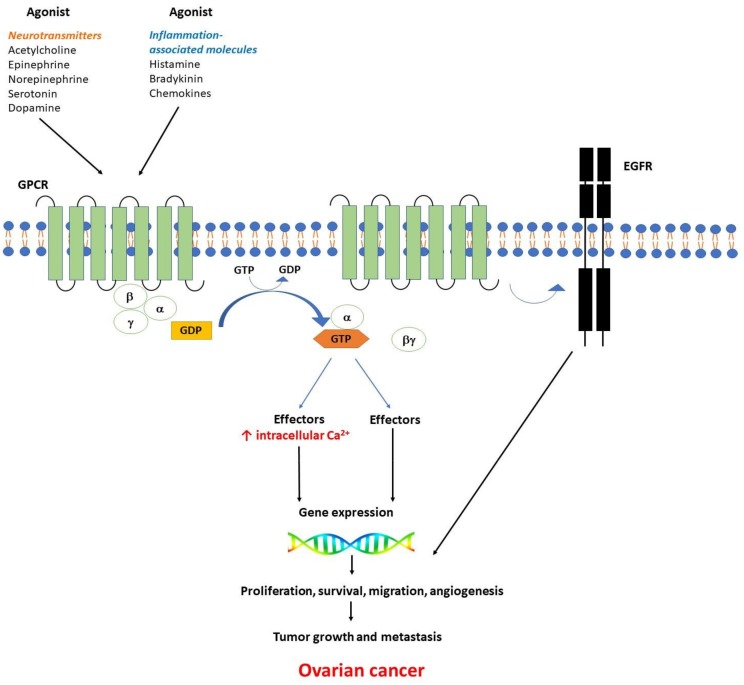Figure 1.
Ligands (agonist) binding to GPCR activate a GTP-binding G protein at the cytoplasmic face of the plasma membrane, followed by the uncoupling of heterotrimeric G proteins into a βγ dimer and the GTP-bound α monomer. Two classes of agonists coupling with GPCRs have been considered: neurotransmitters (acetylcholine, epinephrine, norepinephrine, serotonin, dopamine) and inflammation-related molecules (bradykinin, histamine, chemokines). Multiple downstream effectors are activated by both the βγ dimer and the GTP-bound α monomer, followed by gene transcription and subsequent biological responses. The uncoupled G protein subunits control the activity of many enzymes including kinases, phospholipase C (PLC), and adenylate cyclase to generate second messengers (i.e., intracellular Ca2+ increase, ↑ Ca2+). There is a cross-talk between GPCR and receptor-tyrosine kinases (RTKs)—see round arrow. Among RTKs, the epidermal growth factor receptor (EGFR) plays a key role in the regulation of important cellular processes. The alteration of the signaling cascades activated by GPCRs may trigger gene expression changes and contribute to cell proliferation, angiogenesis, tumor growth, and metastasis in multiple cancers, including ovarian cancer.

